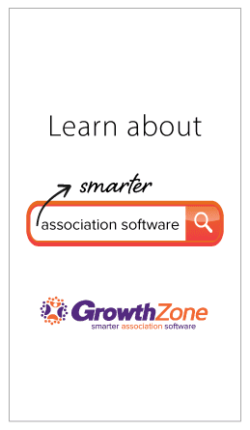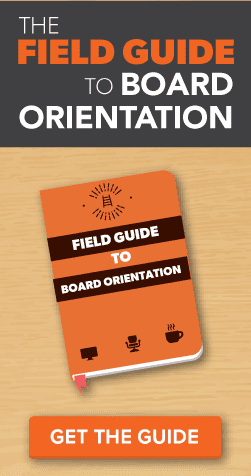More Webinars from Melynn Sight:
On Demand: Answering “So What?”:
Your Association’s Value Proposition
On Demand: How to Develop a
Successful Long-Range Strategy
The Pitfalls and Possibilities of Your Value Proposition
As an association, your brand is a feeling, it’s a connection. You feel connected to a brand and that makes you compelled to act, whether it is to act, buy, pay attention, read or stay connected to it. Developing your association’s brand and member value proposition will define how your members engage with your organization and you communicate with them. Melynn Sight discusses how to take a fresh look at your organization’s value proposition and evaluate if you’re effectively communicating that value to your members.
Melynn Sight challenges you to think about something that you connected with in the year 2020 that completed you to do something different. For her, it was the organization, No Kid Hungry. The way the organization explained what they were doing for families and how everyone is part of the family emotionally touched her and made her want to engage with the brand and engage in their philosophy. That is the power of a brand. The power of a brand, whether it’s a charitable cause or an association that’s known for something specific, it makes a member feel something: more successful. This is what an organization helps them do. Your mission is your purpose, the reason your organization exists internally. Your brand/identity is your promise, the internal promise that you make to the customer. Your value proposition is how you feel and how you want your members to feel. It’s all about emotional benefit.
Your values as an association are listed on your About Us page. This page is a critical tool in communicating to members and prospects why you are important to them. An About Us page means that you as an association want your members to learn about what you are going to do for them. This area should be the declaration of the solution you offer for a member and the value of joining your organization. Members will often scan an about page, this has been proven in studies. But you can combat this tendency by making the most of what you say on your About Us page.
Possibilities and Pitfalls of a Member Value Proposition
People enter a value proposition project, an initiative to discover and declare their value proposition, with their own expectations. Melynn Sight says it might be because their strategic plan says so or the board believes that there is trouble getting people’s attention. So, what is the pitfall in this process? A pitfall is where something can go wrong, a hidden or unexpected danger. Melynn Sight lays out 3 pitfalls for organizations to look out for when working on their value proposition.
Pitfall #1
A value proposition is not about you.
This is a major pitfall because traditional businesses write value propositions this way. But how can a value proposition be relevant to your prospects if it starts with you? You must connect the dots between what somebody needs and what you do well, or you will not make the sale. This is the path to a unique member value proposition; it always starts with them.
Pitfall #2
People in the room.
If you develop this value proposition starting with them, you are going to persuade more of them to do what you want them to do, including prospects. This is not a volunteer, board, or promoter’s value proposition, it is for your members who do not know any better (distracted and indifferent prospects). Put the right people in the room:
- 15-20 people in the room, regardless of the size of your organization
- 6 staff and leaders
- 10 members from diverse member groups, ideally from your target audience
Pitfall #3
Give one clear reason.
It is the job of the association to do the work to discover the value proposition and discover the one big reason that your members are better off with than without you. Avoid the pitfall of talking in generic and diluted words. Melynn Sight spoke with a CEO who said, “I think members don’t pay attention because members just don’t read.” But, as Melynn points out, is it really that they do not read, or could it be the way the association or the communicator presents (or doesn’t) information in a consistent and valuable way.
After identifying possible pitfalls for a member value proposition, Melynn Sight presents three value proposition possibilities through real-life examples.
Possibility #1
We are different.
An organization for executives laid out three emotional benefits for its members. During the pandemic, this organization used these elements as a foundation to pivot the ways they provided member benefits during the shutdown and found great success. The possibility in this message is that it keeps members focused on what to rely on the organization for.
Possibility #2
Members see us differently.
After the shutdown in 2020, an organization in Delaware knew they needed to re-evaluate the associations and what their purpose was. The CEO of the organization challenged her board and staff to research a value proposition and identify what they did best as an association. Melynn Sight says, “If you want a member to see you differently, it takes a serious look at your own organization. You must develop a perception of what you do well, and new words to define this that comes from a member’s perspective.”
Possibility #3
We see us differently.
- Honest and relevant feedback
Listen to your members during the value proposition process.
- Emotional Problem
Work to find one common and emotional solution that appeals to all your audiences and everyone in the room during your value proposition process.
- Objective about your strengths
Being objective about what you do well will help you answer what members need most.
- A message everyone can deliver
If you want your membership to see you differently, you must have a message that every single staff member and leader can deliver.
In summary, there are possibilities and pitfalls in developing a strong about us page that defines your member value proposition. For possibilities: what could be better, both operationally and strategically? For pitfalls, what are the unexpected barriers or things that can go wrong?
Three Pitfalls
- It’s (unintentionally) about you, not them.
- Leaders try to dictate what members should value.
- You are unable to say off the tip of your tongue ONE clear reason to belong.
Three Possibilities
- You are different and you have the chance to discover it.
- Members will see you differently.
- You see yourself differently.
What is standing in the way and what is stopping you from taking advantage of these possibilities? Use these pitfalls and possibilities to think about how to strengthen your strong, unique brand so that your members see you as an association where they can get something they cannot get anywhere else.



